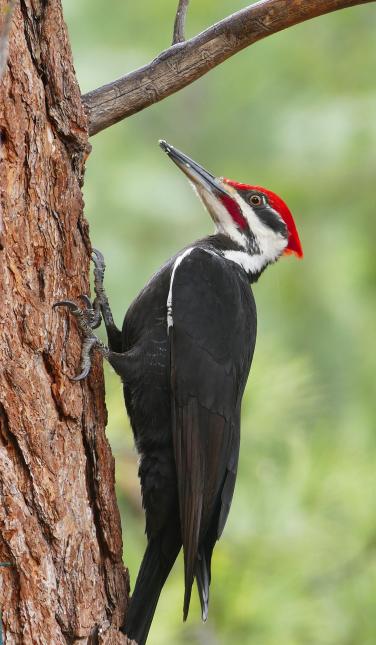Woodpeckers in Florida: Recognition Tips and Environment Preferences
Woodpeckers in Florida: Recognition Tips and Environment Preferences
Blog Article
Unveiling the Tricks of Woodpeckers: Actions, Habitat, and Much More
Woodpeckers, with their one-of-a-kind actions and specialized adaptations, have actually lengthy attracted researchers and nature fanatics alike. These amazing birds possess an array of interesting tricks that lost light on their survival methods, habitat preferences, and elaborate communication techniques. By uncovering the secrets surrounding woodpeckers' behavior and environment choices, a much deeper understanding of these bird wonders arises, offering a glance into their remarkable world. So, what makes these birds really remarkable, and how do they navigate their setting with such accuracy and ability? Let's explore the fascinating realm of woodpeckers and unravel the enigmatic information that make them such intriguing subjects of research.
Woodpecker Behavior Insights
In examining woodpecker actions, an interesting display of specialized abilities and adaptations arises, dropping light on their remarkable environmental niche. Woodpeckers, recognized for their distinct drumming on trees, possess a selection of behavior traits that add to their survival and success in their environment.
In addition, woodpeckers display an unique feeding habits characterized by their capability to remove insects from tree bark utilizing their specialized beaks. Their lengthy, barbed tongues aid in recording prey, while their solid neck muscles supply stability and precision during pecking movements. This feeding approach enables woodpeckers to access concealed insect larvae and extract them with impressive effectiveness.
Environment Preferences and Selection
What elements influence the habitat preferences and selection of woodpeckers? One important aspect affecting woodpecker environment option is the accessibility of appropriate nesting sites. Woodpeckers normally like woodlands with a mix of fully grown trees that give enough possibilities for dental caries excavation.
In addition, woodpeckers reveal a choice for habitats with a plentiful supply of food resources. They are largely insectivorous, feeding upon beetles, ants, larvae, and other insects located in worn out timber or tree bark. Woodpeckers often tend to prefer wooded areas with a varied insect populace to satisfy their dietary requirements.
Furthermore, the presence of dead or worn out trees is one more crucial factor in woodpecker environment choice. These trees not only supply food sources but additionally supply appropriate substrate for dental caries excavation. Dead trees are crucial for the upkeep of healthy woodpecker populations, as they play an essential function in the woodpeckers' life process and ecological community characteristics.
Feeding Practices and Diet Regimen Structure
Woodpeckers demonstrate a specialized feeding actions focused on foraging for pests within different Get More Information environments. Their diet plan primarily includes insects such as beetles, ants, caterpillars, and crawlers, which they locate by touching on tree bark and paying attention for the noise of activity inside. Woodpeckers use their solid beaks to drill right into the wood and their long, barbed tongues to remove victim from holes. In addition to pests, woodpeckers also take in tree sap, fruits, nuts, and seeds, including range to their diet regimen depending upon the period and availability of food resources.
The foraging strategies of woodpeckers are well-adapted to their arboreal way of living. Woodpeckers play a vital duty in maintaining the wellness of forests by controlling insect populations and assisting in the disintegration of wood.
Drumming Sounds and Communication
Utilizing fast drumming noises on numerous surfaces, woodpeckers employ a distinct type of communication to signal region borders and draw in mates. This drumming actions is not just a means of interaction yet likewise works as a means for woodpeckers to develop their existence within a particular location. The intensity, speed, and pattern of the drumming can share crucial information to other woodpeckers in the location.
Woodpeckers utilize drumming sounds to introduce their existence in a territory and to advise off prospective intruders. The loud and recurring nature of the drumming works as a clear signal to other woodpeckers that the location is already asserted. This assists in decreasing conflicts and decreasing physical fights between individuals.

Survival Adaptations and Specialized Makeup

Conclusion
To conclude, woodpeckers show special actions, such as read more drumming noises for communication, and have actually specialized makeup for survival in their selected habitats. Their feeding routines and diet plan composition even more demonstrate their versatility to different atmospheres. By recognizing these facets of woodpeckers, scientists and preservationists can much better safeguard and protect these interesting birds and their environments.
Report this page